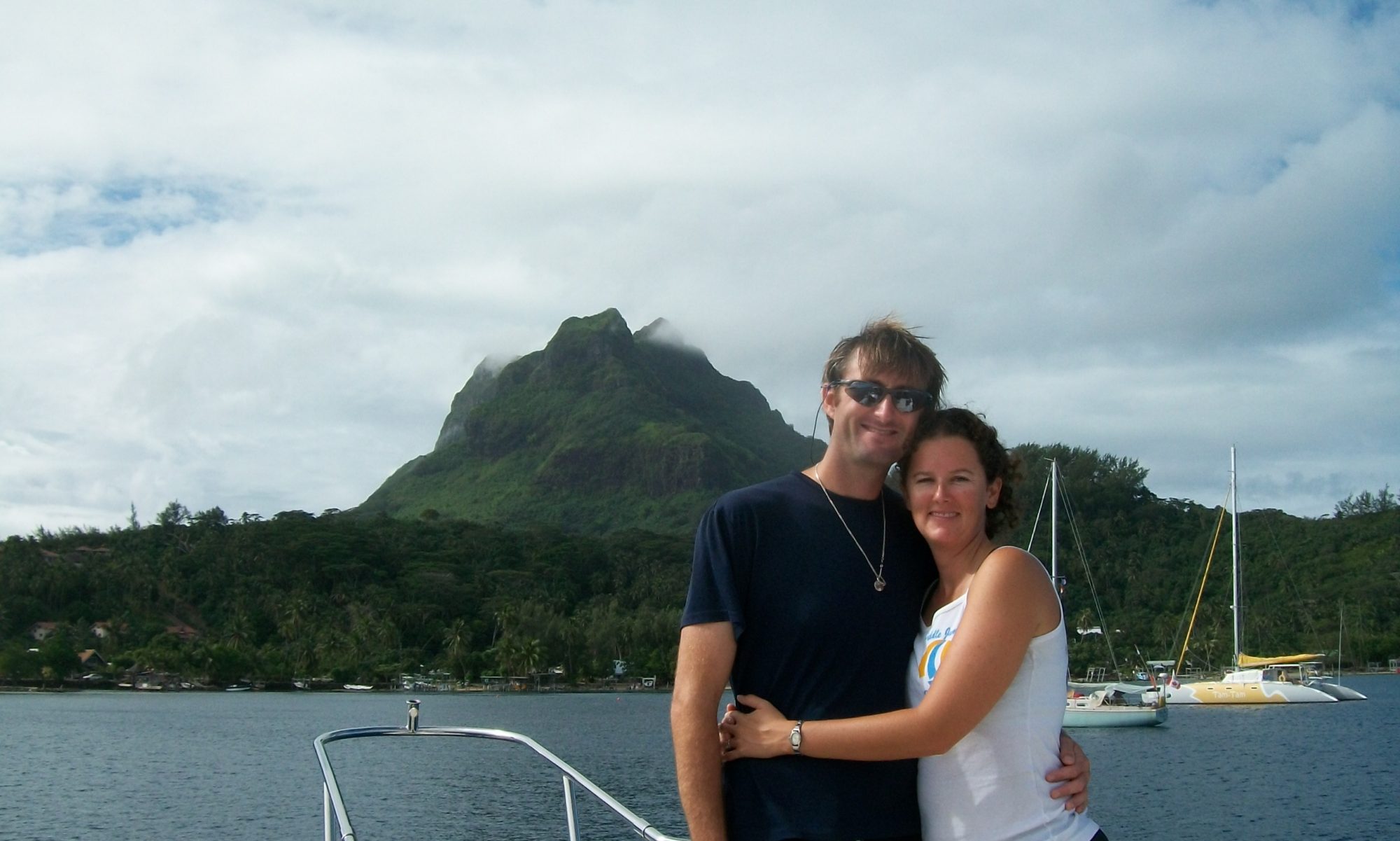Why do you want me to own Sharktopus?
————————–
At sea, enroute Tahiti, French Polynesia
Getting an actual French Polynesian tattoo created by a real, genuine French Polynesian on an honest to goodness island in the middle of the ocean is MAJOR nerd cred in the sailing community. No mere skull and crossbones at the local ink shop here people! Take the source of hundreds of years of sailor tradition and possibly thousands of years of Polynesian culture, put it at the immediate end of the longest single sailing transit you will likely ever do in your entire life and tie it up all in one piece of very well done personalized custom art that can be tastefully placed wherever you want on your body! Though they are even more conservative than even the modern tattoos for the locals, cruiser tattoos manage to be really nice while maintaining some of their original elements.
Not to mention the bragging rights! Holy cow for the rest of your natural life people will point and ask you questions about your tattoo which is the perfect segway into you telling the crowd-enthralling tales of nautical daring-do that you had to go though in order to get that inkjob!
The result is that everyone was getting tattoos. The people you would least expect, the people who swore they wouldn’t, were coming to the cruiser diners sporting their newly minted badges. The number kept growing and, though people didn’t push, there was a taste of peer pressure in the air mixed with the hint of a limited time only offer. “We’re pulling out tomorrow and what are the odds we’ll make it out here again? Last chance!”
So, the big question, did we get tattooed?
It was very tempting and no, no we did not.
Ok, well it was very tempting for Greg. There was no way Tiffany was going to pay actual money to have someone “stab me with a needle a few thousand times!” Also, it’s a permanent mark on her skin and if she commemorated everything notable she did with permanent ink, well, she’d probably look like that guy from the last post!
For Greg, well, gosh. Remembering this trip is what this whole blogging project is for. He didn’t have an intention to get a tattoo when he left Mexico and he hasn’t really gotten any new reasons since arriving on the islands. A tattoo is something that is difficult, if not impossible to get rid of and he thinks anyone making an irrevocable decision should have darn good and specific reasons to do it. He figures he can always get a tattoo later but would have a much harder time “un-getting” one. Sides, he learned to play the ukulele and improved his French, which in his humble opinion, is both way more useful and much cooler.
… and since when did Greg need a good excuse to start telling a story?
Still, a turtle would have been pretty sweet, since we crossed the equator and all.
What would you have done?

















